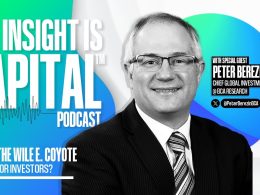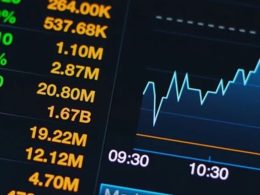by Richard Nield, Senior Portfolio Manager, Invesco Ltd., Invesco Canada
Europe looks more fairly valued than the U.S., and has good earnings potential
Markets around the world experienced the return of volatility during the first quarter of 2018, as central banks tightened policy and the specter of a trade war grew. Despite these pressures, the European market may offer the most opportunity.
Notwithstanding the well-publicized Brexit negotiations and a coalition stalemate in Italy following that country’s March elections, I can’t recall political risk in Europe being this muted for a long time. And, while I believe we’re in the very late innings of the U.S. bull market, an argument could be made that Europe is in a different stock market cycle, without the same level of froth and extreme valuation.
The first-quarter 2018 earnings outlook for the euro area projects a median growth rate of only 5% year-over-year, on an ex-tax basis,1 and 8.4% for fiscal year 2018.2
This appears reasonably conservative when compared to the fourth quarter of 2017, when the STOXX Europe 600 Index delivered 7% sales and 16% earnings per share (EPS) growth, with 60% of companies beating sales estimates and 51% beating EPS estimates.3 With European gross domestic product this year expected to be up around 2.5%, this should underpin revenue and earnings growth projections.
After dealing with sovereign, credit, political and other crises in Europe since 2008, it is important to note that the MSCI Eurozone 12-month forward EPS is still 19% below its peak. This indicates that the eurozone’s domestic earnings base is still depressed but has good potential to climb while things remain calm in the bloc.
Monetary policy
The European Central Bank (ECB) dropped its quantitative easing bias in March and will take its time to assess the state of the economic cycle and the risk of an escalating trade war before taking the next step of exiting QE. Assuming the rhetoric calms down, we could expect the ECB to end net bond purchases by year-end, with an eye toward raising rates by mid-2019.
Historically, when financials do well, so does Europe, so I believe any tightening would be positive for the region, as higher rates tend to lead to margin expansion for banks, insurers and asset managers.
I don’t believe that higher rates would pose a significant risk to equities, as bond yields would need to rise 250 basis points just to return to the long-term average of dividend yields, matching the 10-year bond yield.4 So, while I think equity valuations in Europe are close to fair value, relative to bonds they score well.
Trade
Europe is sensitive to global trade growth, but for now, it is only indirectly involved in any potential trade war, as it has secured temporary exemptions from U.S. steel and aluminum tariffs. If that situation changes, Germany would be the most exposed, with 8.7% of all German exports going to the US.5
Key takeaway
Looking back, 2017 posed a challenge for the Invesco International and Global Growth team as momentum was the style in favor, and we follow a bottom-up approach grounded in Earnings, Quality and Valuation (EQV) metrics. We are excited by the return of market volatility because it’s shaking out some of the momentum players and bringing some sensitivity to valuation back into play.
Learn more about Invesco International Growth Fund.
This post was originally published at Invesco Canada Blog
Copyright © Invesco Canada Blog















